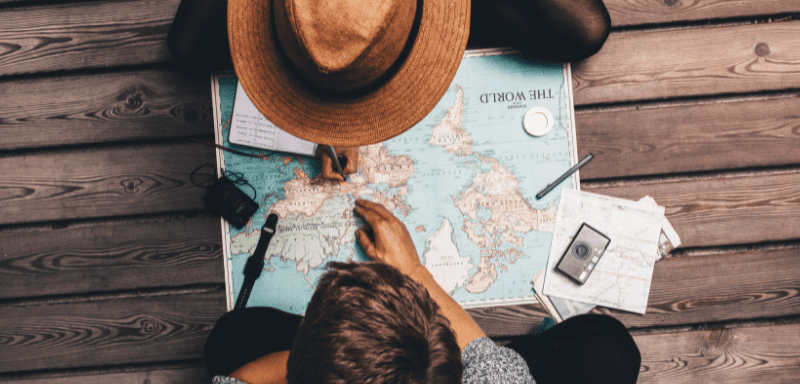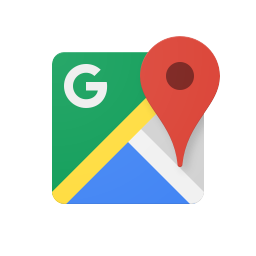Anúncios
Optimize your travel time with the perfect itinerary!

Learning how to create a travel itinerary is essential to ensure a smooth and pleasant trip, so you can organize the details effectively.
A well-structured travel itinerary helps streamline your travel experience, ensuring you maximize your time and budget.
Creating a travel itinerary involves organizing crucial information like flight details, hotel reservations, and planned activities, providing a clear roadmap for your trip.
So, if you feel lost and don’t know where to start, you’ve come to the right place. Follow along as we cover all the essential points for creating an effective travel itinerary.
Why create a travel itinerary?

A detailed travel itinerary helps to ensure your trip runs smoothly and maximizes your time and resources.
Anúncios
It enables you to define trip objectives, reaping numerous benefits such as better planning, budgeting, and stress reduction.
Also, defining objectives early on ensures you prioritize experiences that align with your interests and avoid missing key activities.
Without clear objectives, the trip can become unorganized, leading to frustration and missed opportunities.
Anúncios
Where to Start Planning Your Itinerary
Start with thorough research to ensure you clearly understand your destination.
Then, consider practical details such as accommodation, transport options, and cultural nuances to create a well-rounded plan. Let’s see it in detail:
Researching Your Destination
Begin by gathering detailed information about your destination. Research the top attractions, historical sites, nature spots, and must-visit places.
Additionally, travel blogs, guidebooks, and vlogs can provide diverse perspectives.
Also, check the local climate and seasonal weather patterns to ensure you pack appropriately and know of any weather-related disruptions.
Understanding the basics of the local language or having a translation app can also be very useful. Compile any essential details such as entry requirements, visa information, and health advisories. Finally, knowing the local currency and exchange rates can help you manage your budget more effectively.
Accommodation and Transport Options
Choosing the right accommodation and transport is crucial. Start by deciding whether you prefer staying in hotels, hostels, rentals, or even home-sharing services. Each option has pros and cons based on your travel style and budget.
Evaluate the proximity of potential accommodations to main attractions and public transport.
Furthermore, staying centrally can save time and travel costs. Reading recent reviews on booking platforms can provide insights into the reliability and quality of accommodations.
Also, look into transport options available at your destination. Research local public transport systems, car rental availability, and alternatives like bike or scooter rentals. Pre-booking transport, when possible, can result in savings and convenience.
Cultural Considerations and Local Customs
Understanding cultural norms and local customs is vital for respectful and enjoyable travel.
Learn about common practices, dressing norms, and social behaviors expected in your destination.
Some cultures have unique etiquette, such as tipping practices or dining customs. So, awareness of these helps you blend in and avoid unintentional faux pas.
Additionally, researching local festivals and holidays can enhance your experience and offer unique opportunities to engage with the culture.
A Step-by-Step Guide for You to Build Your Itinerary
Creating a detailed travel itinerary can enhance your trip, covering every important activity or destination.
Below are the crucial steps to organizing your travel plans effectively.
Prioritizing Destinations and Activities
Start by identifying all possible destinations and activities.
Research your chosen location thoroughly to compile a list of things to see and do. So, divide this list into three categories:
- Must-do: activities are your top priorities and main attractions;
- Want-to-do: activities are significant but can be skipped if time doesn’t permit;
- Nice-to-do: activities are optional and add value but aren’t essential.
This prioritization helps organize your time effectively, ensuring no critical experience is missed.
Allocating Time for Each Segment
After prioritizing, allocate specific time slots for each activity.
Create a day-by-day outline in a document, or use digital tools like Google Sheets or Excel. List dates and times, ensuring each must-do activity has a dedicated slot.
Furthermore, consider travel time between locations. Using maps to measure distances and estimate travel duration can be helpful.
This helps avoid over-scheduling and ensures enough time to enjoy each experience. Remember, having a few well-planned activities is better than rushing through many.
Incorporating Flexibility and Downtime
Flexibility is key to a successful itinerary.
Include buffer time after activities to account for delays or unexpected events, this avoids stress and allows some breathing room. Also, plan for downtime by including leisure activities or rest periods to rejuvenate.
Finally, having flexible plans enhances the travel experience. You can adapt without disrupting the entire itinerary if something fascinating comes up.
An essential part of travel is also enjoying unplanned, serendipitous moments. Therefore, maintain a balance between structured plans and free time.
Essential apps and tools for your adventure

Embarking on an adventure requires careful planning with the right tools.
Therefore, utilizing travel-focused apps and having offline access to maps and guides can enhance the experience. See the best of them:
- Google Maps: An indispensable tool for modern travelers, providing GPS navigation and recommendations for nearby attractions, restaurants, and essential services.
- Sygic Travel Maps: An excellent option that allows users to sync their itineraries and view detailed maps with attractions, making planning visits to hidden gems easier.
- Autopilot: Generates entire trip itineraries based on preferences, combining human insights and machine learning to customize travel plans.
- TripIt: Highly recommended for organizing all travel documents in one place, helping manage hotel bookings, flights, and reservations for a hassle-free experience.
These tools empower travelers to navigate confidently and explore new destinations seamlessly, ensuring a memorable adventure.
App

Google Maps
Don’t Miss Out: How to Travel on a Budget
Creating a travel itinerary should include careful budgeting to ensure a satisfying and financially manageable trip.
To help you, we’ve created an article offering the best tips for planning a trip without breaking the bank, while still visiting extraordinary places and participating in breathtaking activities.
Want to include these tips to make your travel itinerary even more effective and realistic within your budget?
Check out the next article for the tips!
Recommended Content
